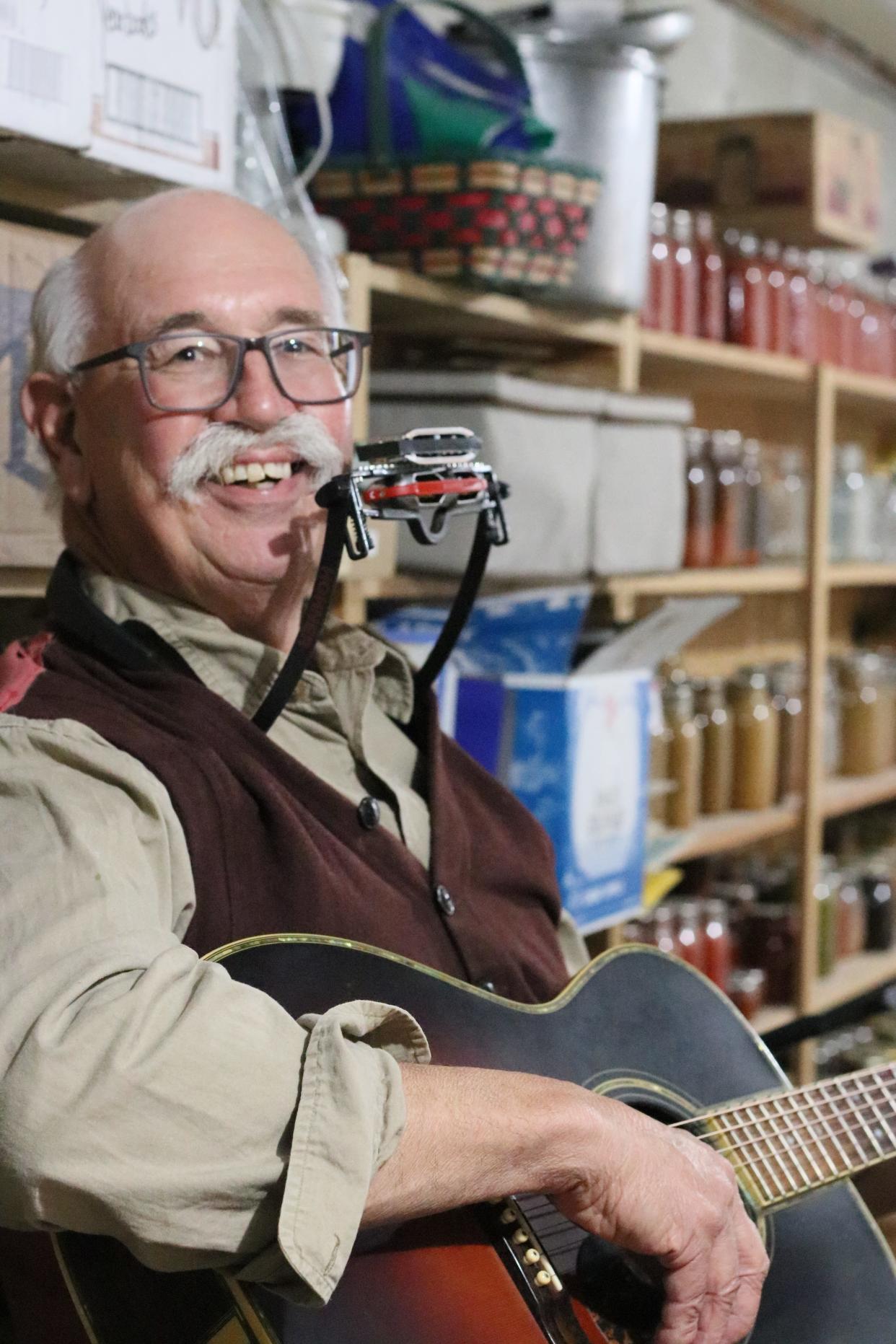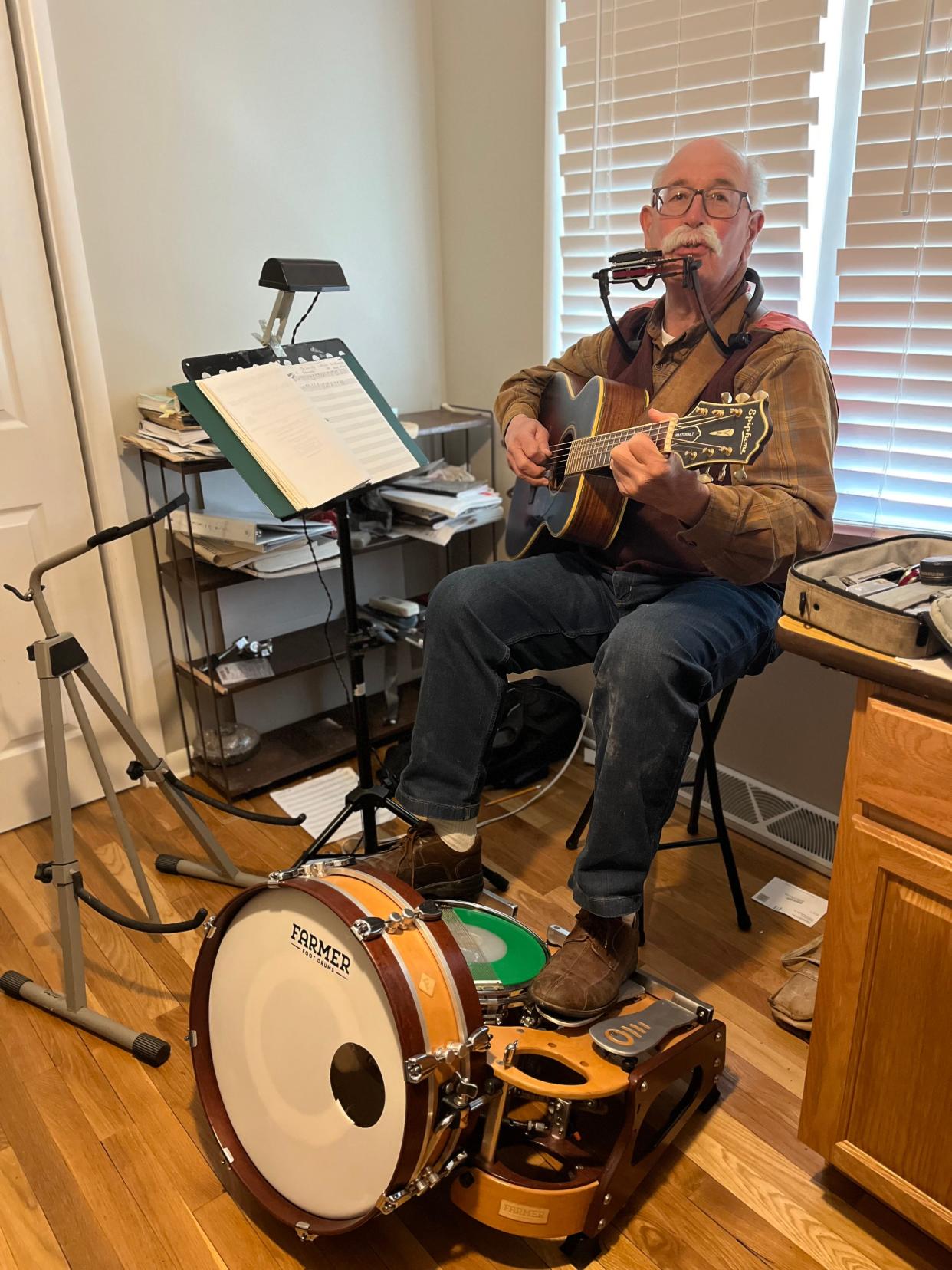Research finds older adults with creative outlets may age better

Throughout his music career, Ray Major played traditional music for fun and to make a buck. He never intended to preserve German American cultural heritage or insulate himself against the downsides of aging.
But with his harmonica and his curiosity, he ended up doing both.
That’s why Jon Kay, an Indiana University professor and director of Traditional Arts Indiana (TAI), chose Major to record the latest installment of TAI’s Elder Music Series. Produced by Kay and his students, the series features older musicians and aims to capture and celebrate not just individual creative expression, but also its community impact.
A harmonica player and multi-instrumentalist from Bath, Indiana, Major lived for 24 years in Ferdinand, in rural Dubois County, where waves of German immigrants began setting down roots in the mid-1800s. Major, who calls learning to play different instruments and styles of music his “old bad habit,” learned traditional German American tunes in the early 2000s, sitting in the Ferdinand living room of Hilary and Laverne Begle, who were about 15 years his senior.

A retired coalminer, Hilary Begle played harmonica and guitar. His wife Laverne played percussion on Stumpf fiddle. Clarence played box accordion. Laverne led the singing – first in English, then German – among an audience of mostly older people. “The younger people who were musicians at the time didn’t seem to care about that music at all,” Major recalled.
The music was fun to play, said Major, who has German heritage on his mother’s side.
“Most harmonica players play the blues,” he said. “I can play the blues, but I find it to be pretty boring after a while. There’s no melody.”
The Begles, who have since died, were part of an earlier generation who played the traditional German American songs in barns and dance halls. “I don’t think it was until they got very old that they realized I cared about what they were playing,” Major said. “I didn’t want to study it. I wasn’t trying to preserve it. I just liked playing it.”

Major, a retired tree farmer and music teacher, moved with his wife Deborah to Bloomington almost two years ago. With their children grown, they were ready for a change. “I play hillbilly music on the harmonica, but we moved here to hear Mozart at the music school,” he said. “We go to recitals four or five nights a week.”
Kay, a folklorist and associate professor in IU’s folklore and ethnomusicology department, works in the fast-growing field of creative aging. He studies how creative expression helps people as they age.
“Creative aging is gaining traction,” he said. “It’s the idea of creative practice being an essential way for people to age well. It’s rooted in the power of the arts to connect us to other people and get us into that flow state.”
Research points to creative practice — not just art and music, but also hobbies like gardening, knitting, and cooking — as important tools for staving off isolation, boredom, and helplessness later in life. “I tell people it’s kind of like saving for retirement. The best time to start is when you’re 18; the second-best time is today,” Kay said. “We need to invest in ourselves.”
As part of the state-funded Elder Music Series project, Kay produces several hundred CDs of each recording and hosts a release party where CDs are given away to friends and community members. Major’s release party will be part of Strassenfest in Jasper, Indiana, this summer. Through these events, and the creative aging summits he hosts around the state, Kay hopes to highlight creative expression as an important component of resilience.
For Major, who often plays harmonica at the Runcible Spoon’s Irish music sessions, the recording process was difficult. He wasn’t used to focusing on how good his playing sounded.
“There are other harmonica players in the world who play the kind of music I play and they’re better than me, but I don’t care,” he said. “If I had to be good, I’d just put it away and never touch it.”
“For me, this is fun,” he said. “That’s all it is.”
This article was written with the support of a journalism fellowship from the Gerontological Society of America, the Journalists Network on Generations, and the Commonwealth Fund.
This article originally appeared on The Herald-Times: Indiana University creative aging program records elder musicians
